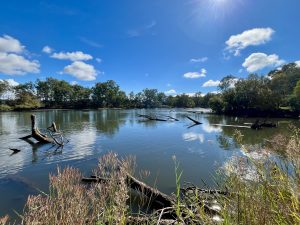The presence of bats tells much about the health of the environment. Where there are bats, there is bounty!
Where there are microbats, there are plenty of insects. Microbats are primary predators of night-flying insects, using a sonar system of echolocation to navigate precisely and catch insects, all at high speed. They need up to three-quarters of their bodyweight in insects, every night. An environment providing that many insects for bats must be a healthy one, with diverse native plant species in all stages of growth and decay supporting nectar feeding, sap-sucking and decay dependent insect lifecycles.
Where there are bats, there is good shelter nearby. Microbats shelter during the day in tree cracks, in gaps between peeling bark and tree trunks and in hollows – another reason mature trees and dead branches in the landscape are precious.
Sleeping by day, microbats transform into aerial acrobats at night, emerging from cracks and tiny hollows to hunt. They eat a wide range of insects, including mosquitoes, moths and beetles. These ‘ecosystem services’ make microbats a vital contributor in our local bush parks; without them insect numbers become unbalanced and vegetation suffers.
You may notice ‘bat boxes’ in some of the reserves managed by Parklands Albury Wodonga. These are designed to provide safe places for bats to shelter during the day where mature trees have been removed in the past, supplementing the habitat until the rehabilitated bush can support them once again. By providing supplementary bat housing, we can bring balance to the insect population and benefit the young vegetation.
Supporting bat populations is a priority where new biodiversity corridors are being created. Parklands Landcare Led Bushfire Recovery ‘Bonegilla Bat Biodiversity’ project aims to do just that; protecting native vegetation by fencing out livestock, removing invasive species and engaging local community with habitat restoration and wildlife monitoring. The project is supported by the Australian Government’s Bushfire Recovery Program for Wildlife and their Habitat.





